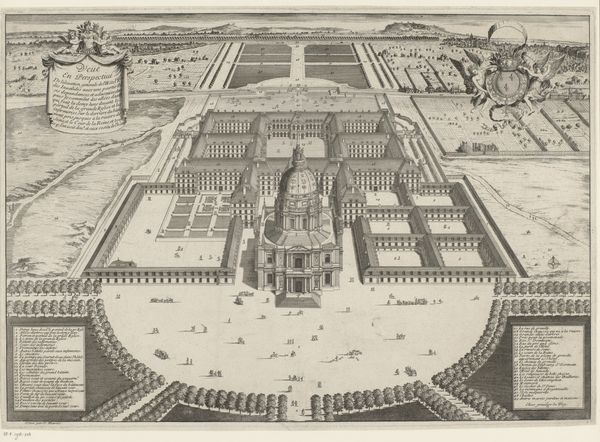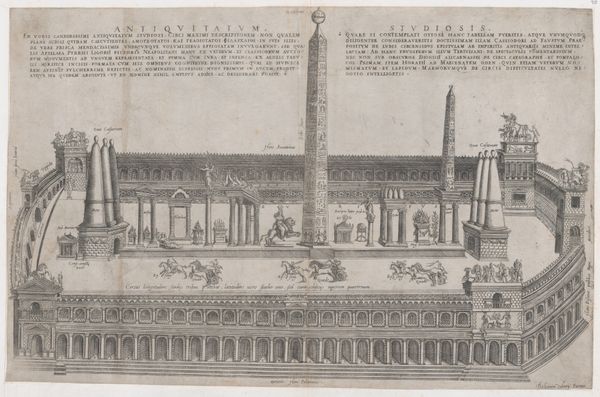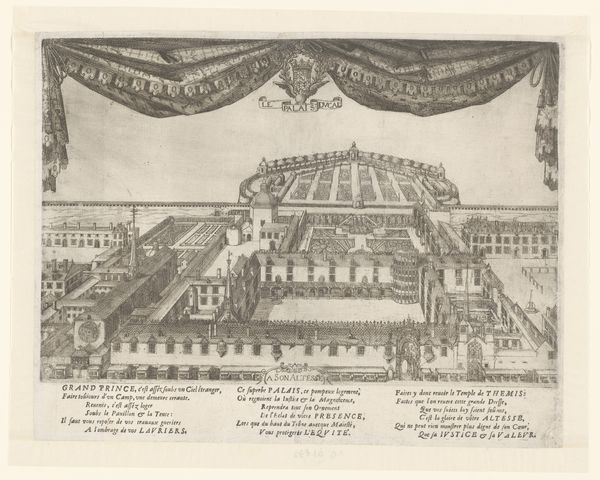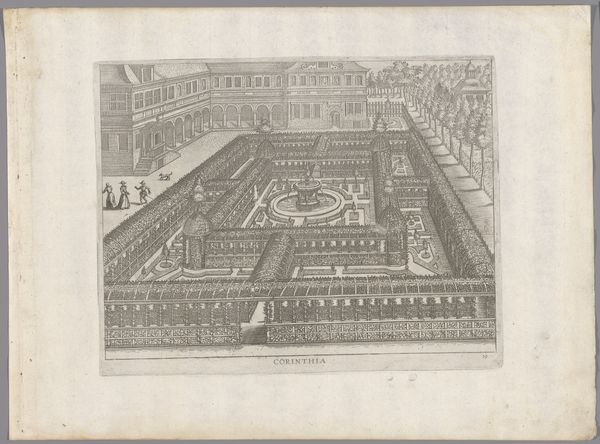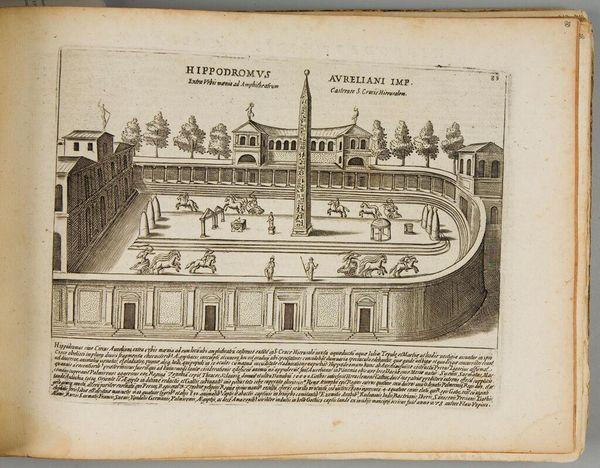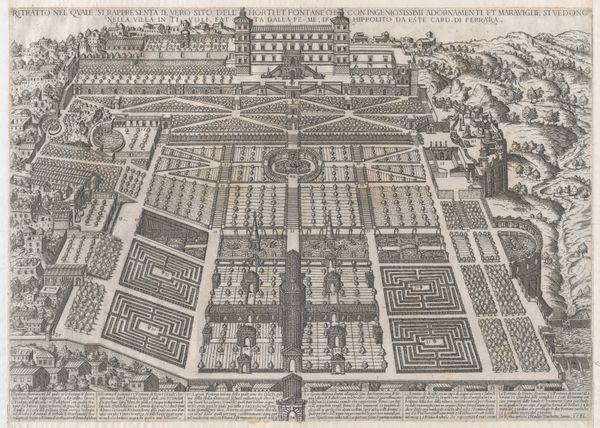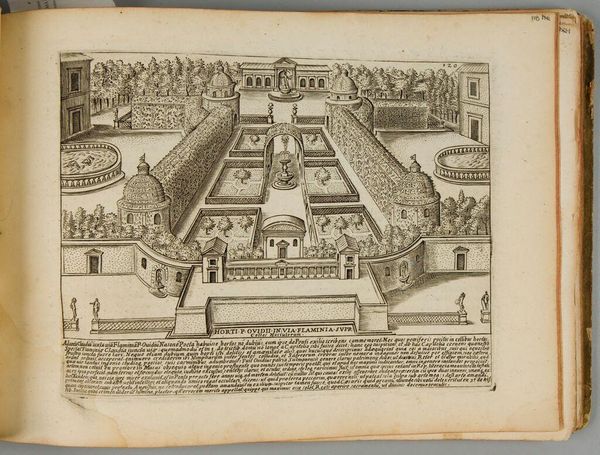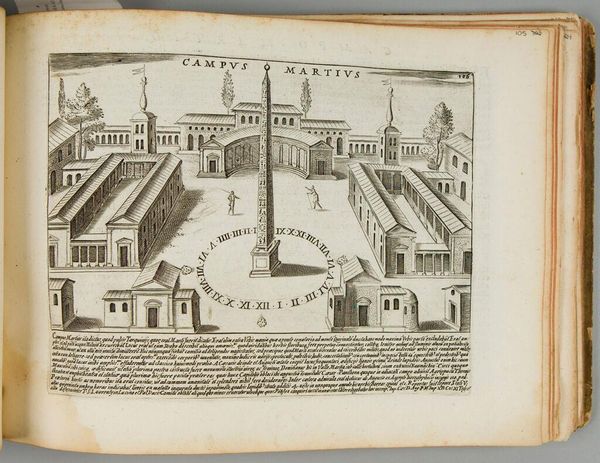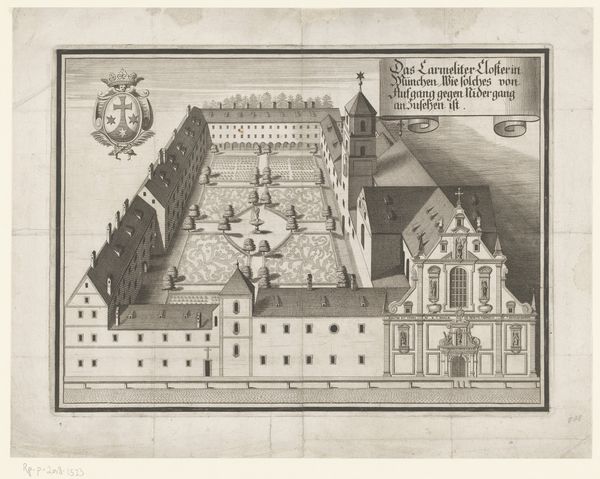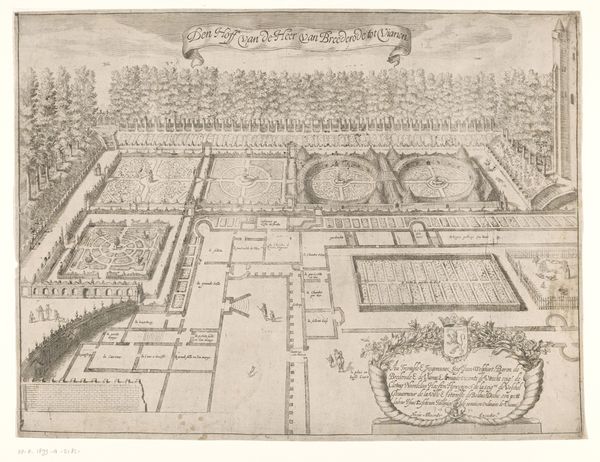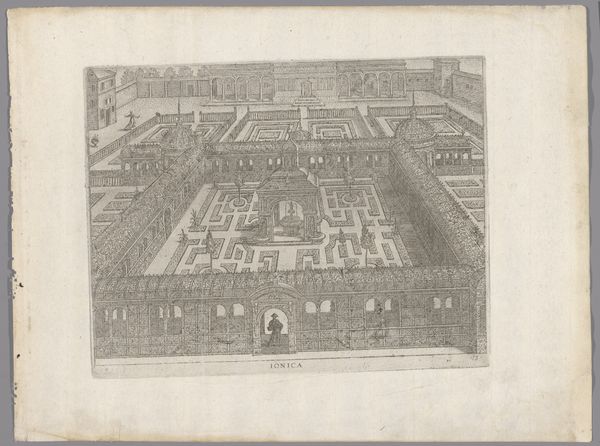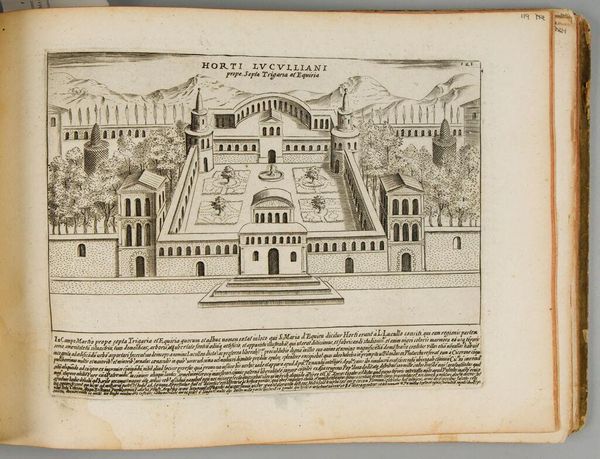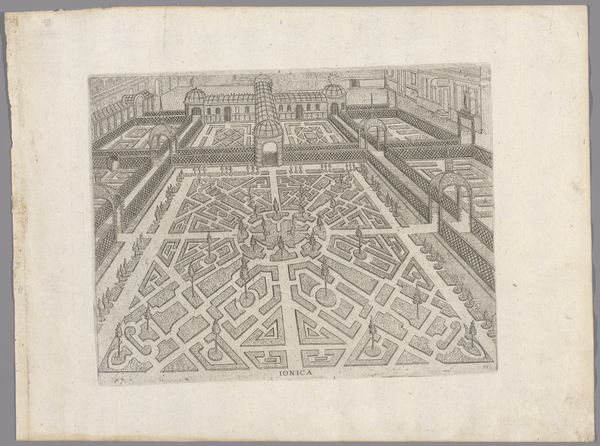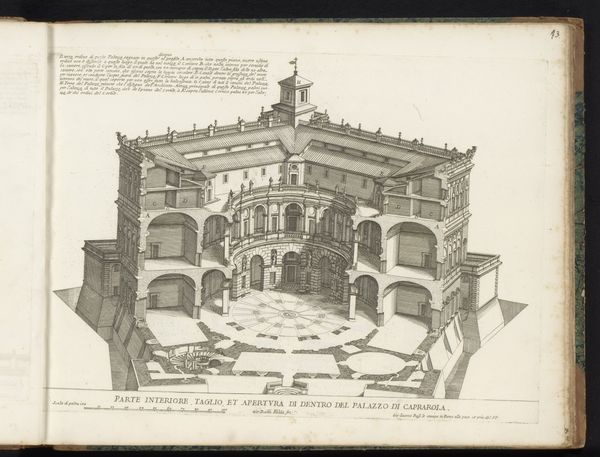
Speculum Romanae Magnificentiae: Monte Pincio Palace and Gardens 1555 - 1630
0:00
0:00
drawing, print, etching, architecture
#
drawing
#
garden
# print
#
etching
#
landscape
#
italian-renaissance
#
architecture
Dimensions: sheet: 15 15/16 x 21 in. (40.5 x 53.4 cm) plate: 17 15/16 x 22 1/16 in. (45.6 x 56 cm)
Copyright: Public Domain
Curator: Looking at this etching, I immediately feel a sense of organized opulence. The crisp lines detail an elaborate garden plan with a prominent palace looming in the background. It's quite striking in its precision. Editor: We're examining "Speculum Romanae Magnificentiae: Monte Pincio Palace and Gardens," an etching made sometime between 1555 and 1630. It’s believed to be the work of Antonio Tempesta, and captures the grandeur of a specific time and place in Rome. And, as you noted, it screams precision and privilege. Curator: Privilege certainly leaps out, especially when viewed through the lens of accessibility and power. Whose gaze is this garden designed for? It isn't just about aesthetic beauty; it signifies control and status, reflecting a social hierarchy literally etched into the landscape. Gardens were not just escapes, but curated statements of power. Editor: Precisely. These images served a purpose. This print comes from a collection, "Speculum Romanae Magnificentiae," essentially a visual catalog showcasing Rome’s architectural wonders for a growing public interested in classical antiquity and its revival during the Renaissance. These images played a significant role in shaping the perception, and perhaps even influencing the architectural tastes, of its viewers. Curator: I am interested by how gendered these spaces often were too, both in terms of use and design. Considering this, it would be great to understand who populated and maintained these gardens, whose labor and marginalization created space for these images to circulate in the first place. It provokes us to ask, "Whose stories aren't being etched here?" Editor: Good point. There is also the political element to consider; in a way, these prints participated in the "battle of images" related to the Counter-Reformation, attempting to show the splendor and power of papal Rome in the face of growing criticism from Northern Europe. This artwork is at the Metropolitan Museum of Art in New York now, further influencing this ongoing global socio-political and historical narrative. Curator: So while admiring its beauty, we must remain cognizant of the power dynamics at play, the cultural narratives these gardens perpetuated, and the unseen histories within them. Editor: Indeed. Examining artworks like this allows us to excavate not just artistic talent, but the complex layers of societal and political meanings they carry.
Comments
No comments
Be the first to comment and join the conversation on the ultimate creative platform.
